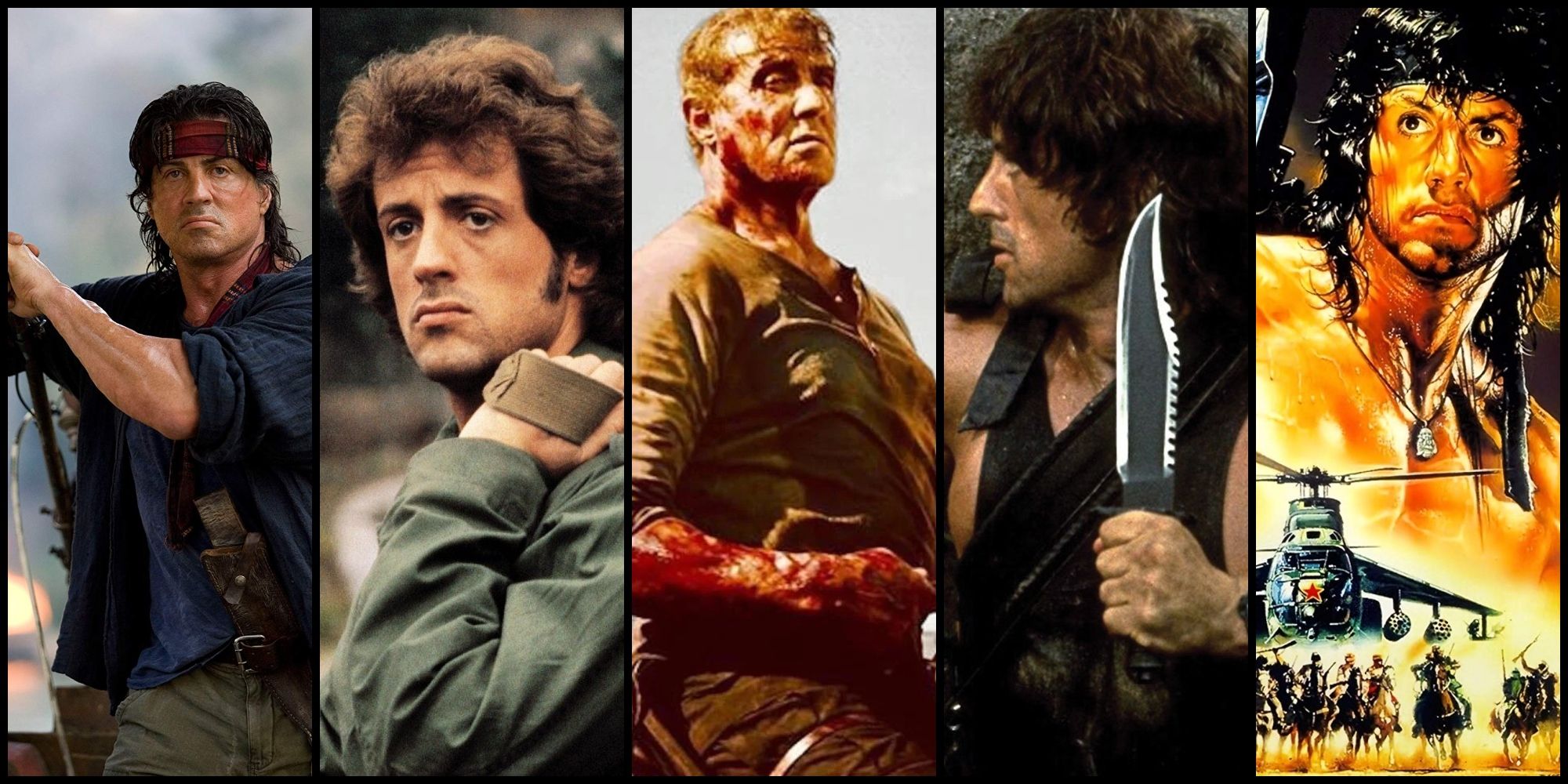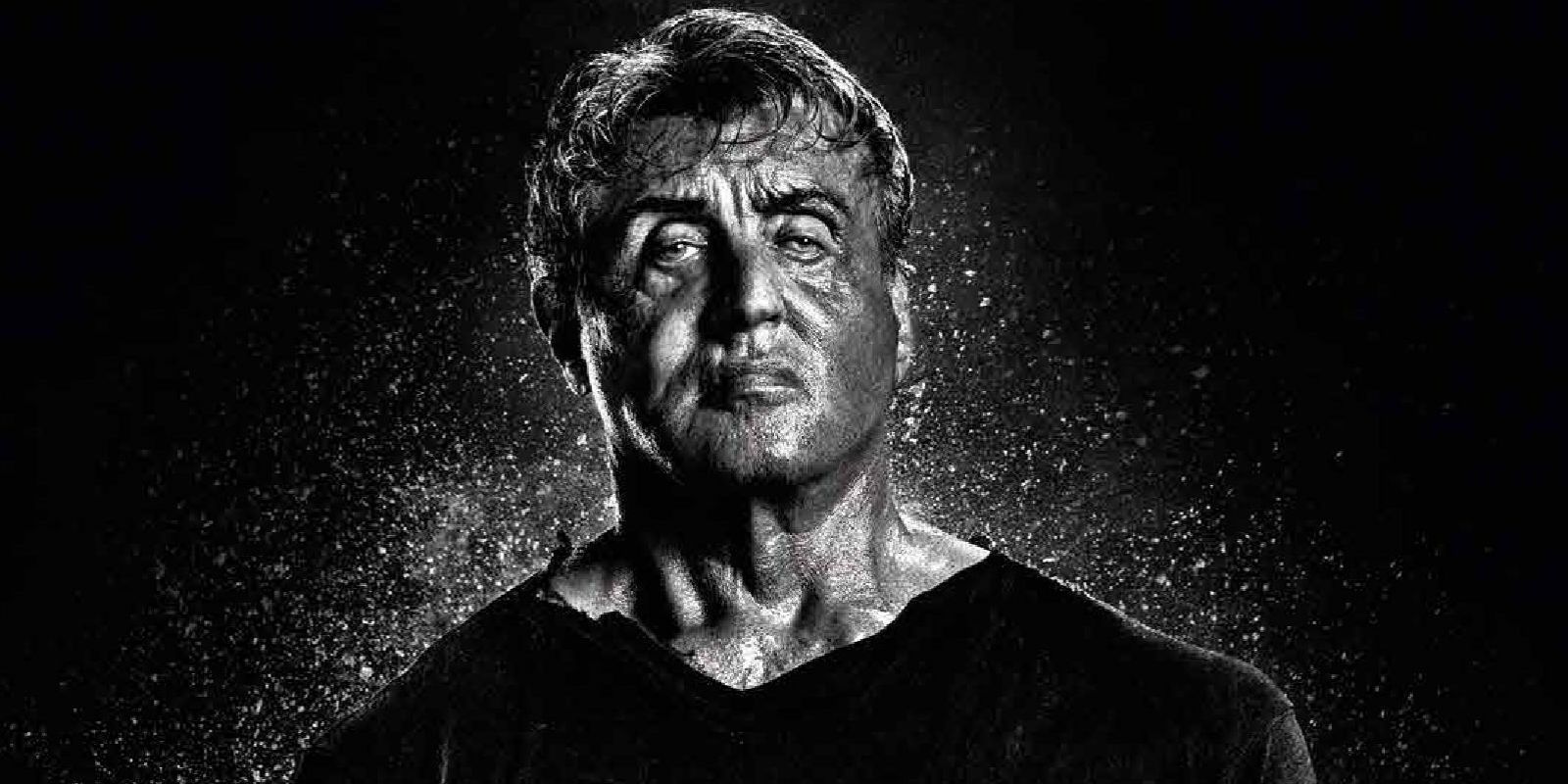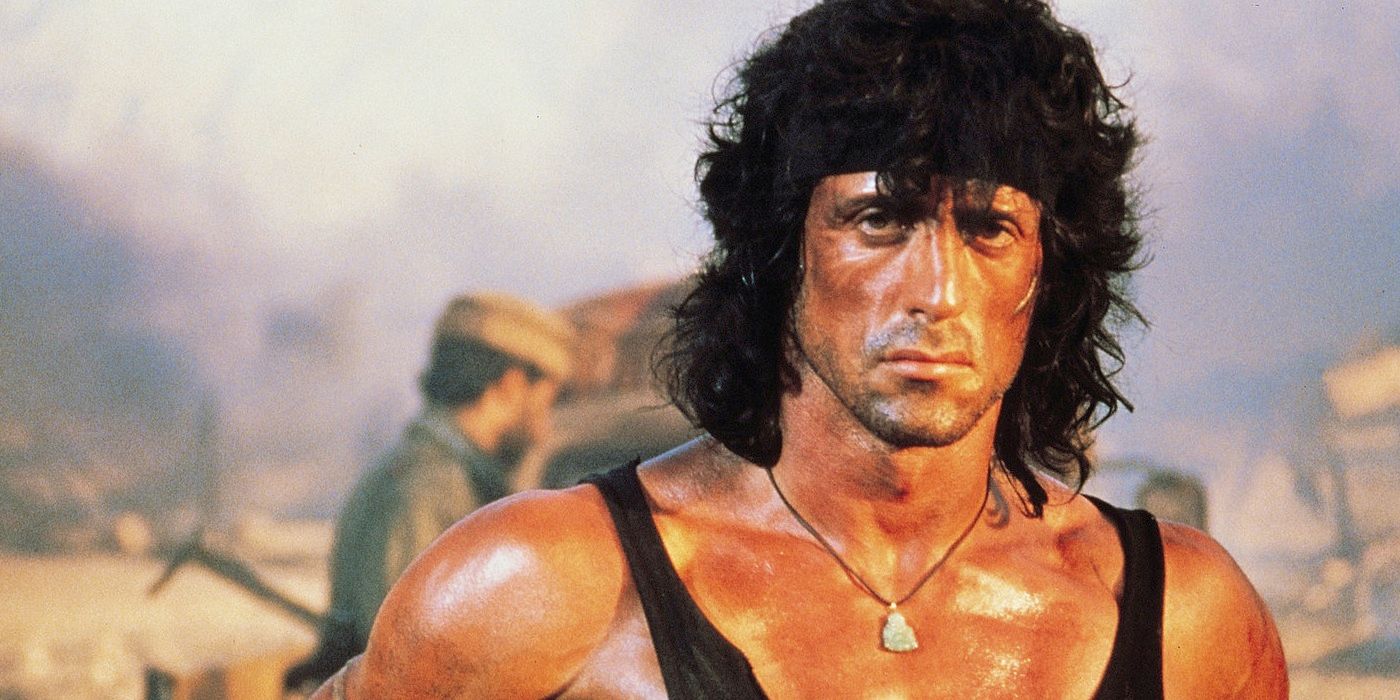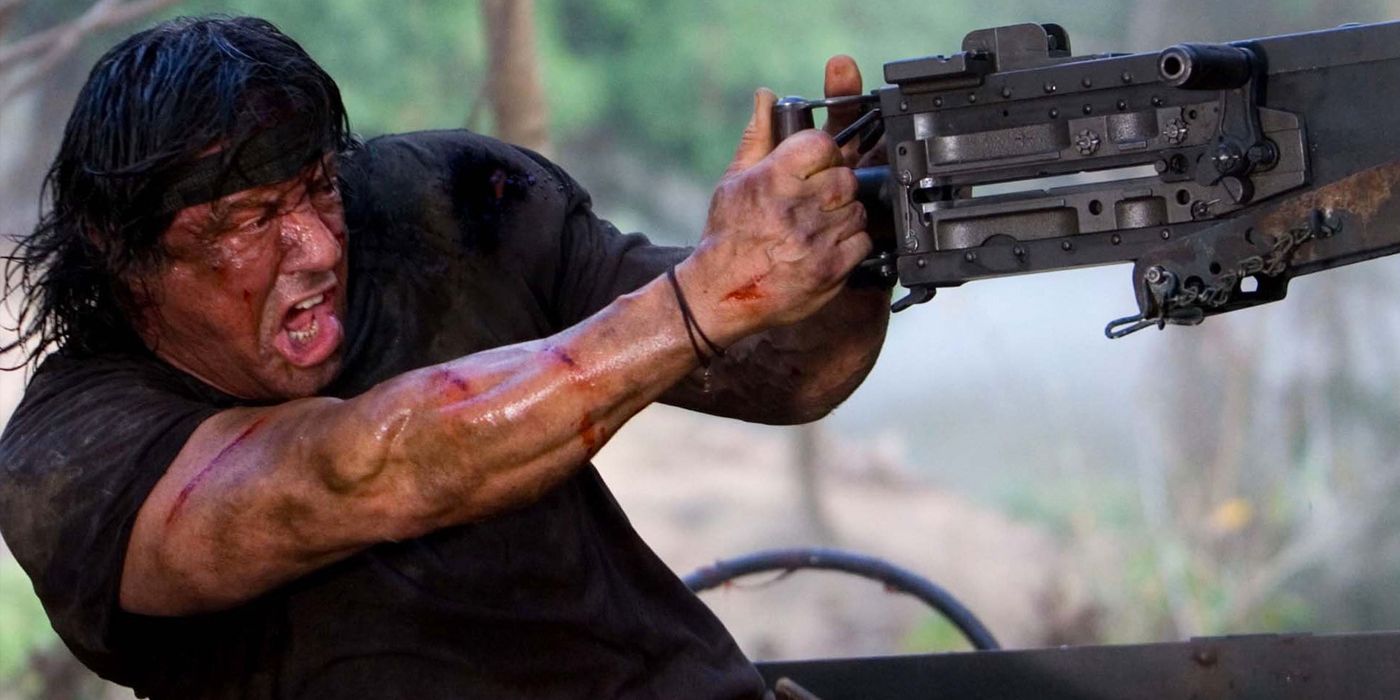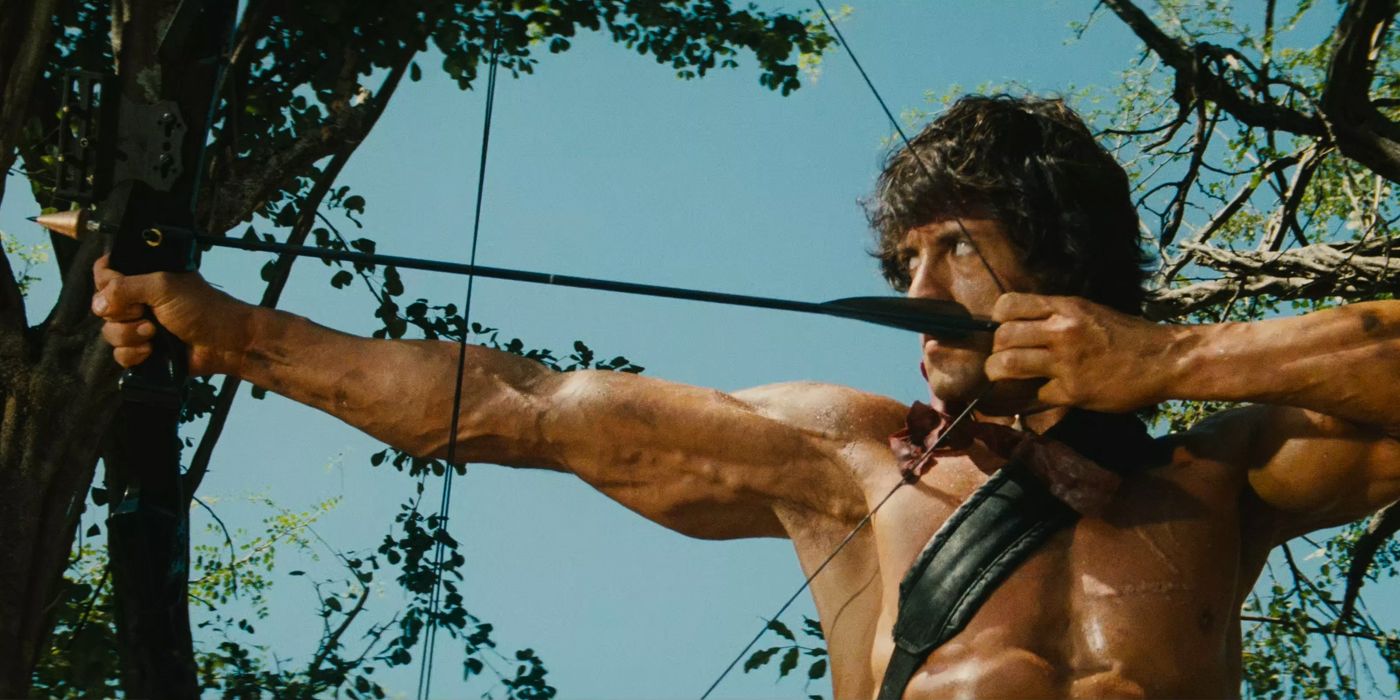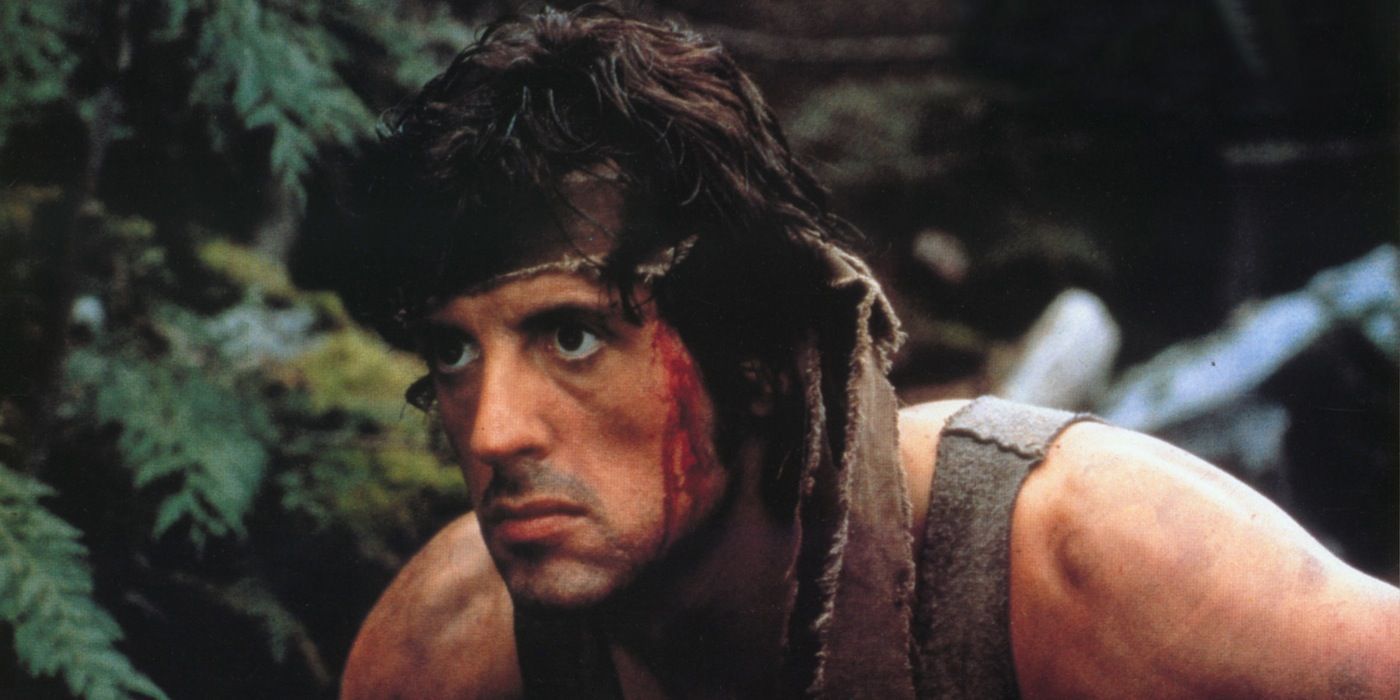Rambo has drawn a lot of blood since his debut in First Blood, but which of his onscreen missions is his finest hour? Time to rank all his movies, including Rambo: Last Blood.
First Blood was adapted from the novel of the same name by author David Morrell. The Rambo from the book is a different character than the one Sylvester Stallone would portray. While still a tragic figure, that version had no issue killing anyone standing in his way, and he’s eventually killed in the closing chapter. When Stallone took the role it was decided to make him more sympathetic. The only casualty in the movie is caused by an act of self-defense and the ending makes it clear his actions were triggered by deep-rooted trauma.
The character became the prototypical action hero in the next two entries, with a greater focus on his muscles and use of heavy weaponry. Rambo: First Blood Part II would cement his pop-culture status, with the image of a sweaty, bandana-clad Stallone armed with a rocket launcher becoming the dominant image of the character. When the actor finally returned to the role after a 20-year absence, he felt the sequels had strayed too far into glorifying war, and wanted to return to the angry quality found in David Morrell’s novel.
Stallone has been the creative driving force behind the Rambo series, and just like he’s done many times with Rocky, each entry feels like a fresh chapter in the character’s journey. He set to bring the franchise to a close with Rambo V: Last Blood this year, but before he dusts down the bazooka one final time, let’s look back on the saga thus far and see which movie comes out on top.
5. Rambo: Last Blood (2019)
Rambo: Last Blood spent almost a decade in development, with Sylvester Stallone developing a few different concepts for the character's fifth outing. This includes - infamously - a take where Rambo was tasked by the government to take down a monster, which was based on horror novel Hunter. He eventually settled on a story where a retired Rambo heads into Mexico to save his surrogate daughter from sex traffickers. Part of the reason Stallone hesitated with making another entry is he felt the final scene of the fourth movie was a perfect, hopeful ending for the character and didn't want to cheapen it.
Unfortunately, Rambo: Last Blood doesn't prove to be a fitting send-off. The first two acts are very much Taken featuring Rambo, before climaxing with a massacre on the character's booby-trapped laden farm. The violence is suitably bloody and over the top and Stallone gives a soulful performance, managing to overcome with some corny dialogue. In spite of his age, the star can still convincingly take down an army of killers. The problem is that everything about the movie is stock, from the plot to the one-note villains functioning mechanically towards the bloody showdown.
In the end, Rambo: Last Blood is a brutally effective b-movie - but that's it. It offers gory action and a dependably great performance by its leading man as a weathered Rambo, but it all feels hollow. Despite being billed as the final chapter, its ending can't help but leave the door open a crack just in case Stallone has a change of heart.
4. Rambo III (1988)
Where First Blood was a relatively grounded survival drama, Part II put the focus firmly on explosions and firepower. The massive success of the second movie told producers they were moving in the right direction, so Rambo III needed to be bigger – but not necessarily better. The film certainly adopts that mantra, with Stallone having muscles that would be put a Greek god to shame. Whereas the climax of First Blood had two men firing guns at each other in a cramped police station, Rambo III has the title character ramming a helicopter with a tank. The plot, on the other hand, couldn’t be simpler; Rambo’s mentor Colonel Trautman gets captured by Russian forces in Afghanistan and it’s up to Rambo to save him.
Rambo III was by far the biggest production of the franchise and there’s an impressive scale to it, from the expansive landscape to the vast armies that stomp across it. The making of the movie was messy, with original director Russell Mulcahy (Highlander) fired early on and the production went through four DPs. The original script was more complex also, with a subplot involving Rambo saving Afghan children with the help of a female physician. An escalating budget found the plot and themes being pared back in favor of more action.
Despite Rambo III’s flimsy story there’s still fun to be had. The action scenes are well staged and effectively crunchy, and a sequence where Rambo stalks unlucky Russian troops in a dark cave is surprisingly eerie. The relationship between Trautman and Rambo has a lot of warmth and after being so racked by guilt and trauma, it’s nice to see the title character crack the occasional gag. That said, the movie’s narrow focus on Rambo and Trautman comes at the expense of pretty much every other character, with the central villain barely registering.
Rambo III is ultimately a serviceable 80's action movie with good setpieces but lacking in terms of personality. The movie grossed significantly less than the previous entry too, and Stallone would later state the reason he came back for a fourth movie was dissatisfaction with Rambo III.
3. Rambo (2008)
Rambo forms something of a duology with Rocky Balboa, in that both found Sylvester Stallone revisiting an iconic character long after a disappointing "final" chapter to redeem the franchise. In the 20 year gap that followed Rambo III, Stallone had resisted a pitch that found Rambo rescuing the President from a takeover of Camp David and mulled adapting Chuck Logan’s novel Homefront as a fourth movie, which would have found Rambo with a child and taking on drug dealers. Stallone’s script was later used for Homefront’s 2013 adaptation with Jason Statham.
The eventual movie would find Rambo living in Thailand where he captures snakes for a living and is hired by a group of Christian missionaries to sneak them into Burma. When they’re later captured, Rambo leads a group of mercenaries back in for a rescue mission. Stallone co-wrote and directed this entry, which put a spotlight on some of the very real atrocities happening in Burma. This gives the violence extra bite and the film is by far the bloodiest of the saga. Rambo has the highest body count of the series and depicts scenes of genocide and torture, with men, woman, and children meeting brutal ends.
Needless to say, Rambo’s tone is much darker. The character himself is closer to the angry, bitter version in the First Blood novel and Stallone says the film’s aggressive camera style is inspired by Rambo’s personality. There are no shirtless scenes or exploding arrows to lighten the mood here. The film moves at a propulsive pace, and once the second half begins it rarely lets up. Stallone still understands the need for catharsis though; after building up how truly repulsive the bad guys are for over an hour, the final battle sees Rambo manning a gigantic machine gun and cutting down an entire army like a lawnmower to grass - only much gorier.
The darkness of Rambo set it apart from the rest of the series at the time, but the film’s dour approach can be a little off-putting too. In spite of its flaws, Rambo stands as one of the leanest action films of its era, and provided something of a happy ending for the tortured hero, as he returns home after decades in self-imposed exile.
Page 2 of 2: What Is The Best Rambo Movie?
2. Rambo: First Blood Part II (1985)
The image moviegoers have of Rambo comes almost entirely from the sequel; the bow & arrow, the high body count, the bazookas and so on. Where First Blood is a drama at its core, First Blood Part II transformed Rambo into a literal one-man army. The story finds Rambo being released from prison following his actions in the first movie and tasked with returning to Vietnam to take pictures of an empty POW camp. Of course, he finds it’s not so empty and it's up to him to get the POWs home.
The hotly contested Arnold Schwarzenegger vs. Sylvester Stallone cinematic rivalry was warming up around this time, with both stars seeing who could have the best physique or most explosions. Both First Blood Part II and Commando came out in 1985 and featured endings where the ripped, shirtless hero mows down an endless wave of bad guys with an M-60. Rambo would win that battle at the box office but the war was far from over. As you'd expect, the leap in tone from First Blood to its sequel is quite profound, but there’s continuity of character. Rambo may be very, very good at killing, but Stallone reinforces more than once he’d rather not be fighting at all.
The focus here is very much on action, with a wide range of variety of setpieces, from stealthy prison breakouts to helicopter dogfights. Rambo is armed with lots of new toys, including arrows tipped with C4. Rambo: First Blood Part II is often totally outlandish and cartoony, but it’s a slickly made entertainment. Characters are drawn with broad strokes – the noble Trautman, the slimy CIA agent Murdock etc – and morality is black and white, even if the conflict itself wasn’t. Rambo became firmly enshrined in popular culture following the second movie, and while the film itself hasn’t necessarily aged well, Rambo: First Blood Part II is still a landmark slice of 80s action cinema.
1. First Blood (1982)
First Blood is a project that was kicked around Hollywood for a long time before reaching screens. Dustin Hoffman, Paul Newman, and Al Pacino all turned it down, and Stallone – whose post-Rocky movies hadn’t made much impact – was the eleventh choice. The film opens with Rambo coming to a small town to reunite with the only other surviving member of his Vietnam squad – only to find he’s passed away from cancer. On his way out of town, he’s picked up by Sheriff Teasle (Brian Dennehy), who sees him as a homeless vagrant and drives him out of town. Rambo is arrested when he refuses to leave, and after some police station abuse triggers his PTSD, he escapes and a violent manhunt begins.
While First Blood contains plenty of action, it's ultimately a drama about a man broken by his war experiences and struggling to fit back in. He was a hero in the war but once he returned home, he was cast aside and forgotten. For most of the movie, Stallone is near mute, only communicating with his eyes and body language until his breakdown down at the end. This was something of a happy accident, as Rambo featured much more in the original cut. Stallone hated this version so much he recommended to producers they cut Rambo’s dialogue to the bare minimum and let other characters do the talking. This turned out to an inspired choice and it may rank as some of Stallone’s best work on screen.
Viewers experiencing First Blood based on the reputation of the series might be surprised by how grounded it is. The body count comes to one, and Rambo is far from an invincible machine; when he’s wounded, it really hurts. Brian Dennehy (The Blacklist) is also great as Teasle, whose pride and arrogance digs him and his men into ever deeper trouble. Teasle is easily the franchise’s most complex antagonist, and Dennehy brings depth to what could have been a two-dimensional bully. Trautman’s fatherly relationship with Rambo would get fleshed out in later entries, but his presence here is vaguely sinister, and there’s every implication part of his reason for taking part in the manhunt is to cover his own mistakes. His stoic presence is well used during Rambo’s breakdown scene, where even his face cracks a little upon hearing how broken his former best soldier has become.
In a strange way, First Blood tonally feels like the odd man out of the Rambo saga, but without it, the other movies wouldn’t have been as strong. Stripping away the action and explosions, First Blood works as a solid drama, first and foremost. The movie provided a solid foundation for the sequels to build on, but like with a lot of franchises, the original is always the purest version.

